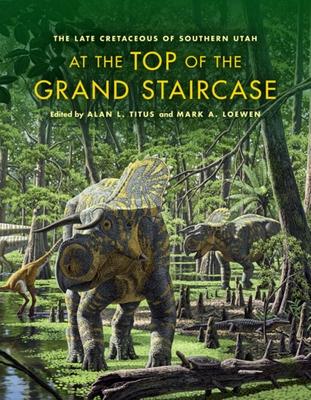The Grand Staircase-Escalante National Monument in Utah is the location of one of the best-known terrestrial records for the late Cretaceous. A major effort in the new century has documented over 2,000 new vertebrate fossil sites, provided new radiometric dates, and identified five new genera of ceratopsids, two new species of hadrosaur, a probable new genus of hypsilophodontid, new pachycephalosaurs and ankylosaurs, several kinds of theropods (including a new genus of oviraptor and a new tyrannosaur), plus the most complete specimen of a Late Cretaceous therizinosaur ever collected from North America, and much more. At the Top of the Grand Staircase: The Late Cretaceous of Southern Utah documents this major stepping stone toward a synthesis of the ecology and evolution of the Late Cretaceous ecosystems of western North America.

At the Top of the Grand Staircase: The Late Cretaceous of Southern Utah
The Grand Staircase-Escalante National Monument in Utah is the location of one of the best-known terrestrial records for the late Cretaceous. A major effort in the new century has documented over 2,000 new vertebrate fossil sites, provided new radiometric dates, and identified five new genera of ceratopsids, two new species of hadrosaur, a probable new genus of hypsilophodontid, new pachycephalosaurs and ankylosaurs, several kinds of theropods (including a new genus of oviraptor and a new tyrannosaur), plus the most complete specimen of a Late Cretaceous therizinosaur ever collected from North America, and much more. At the Top of the Grand Staircase: The Late Cretaceous of Southern Utah documents this major stepping stone toward a synthesis of the ecology and evolution of the Late Cretaceous ecosystems of western North America.